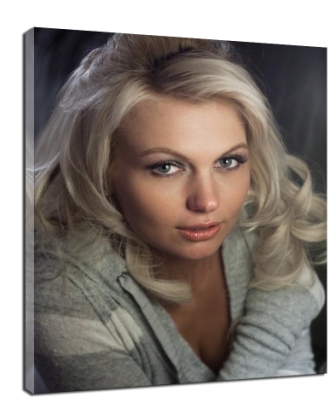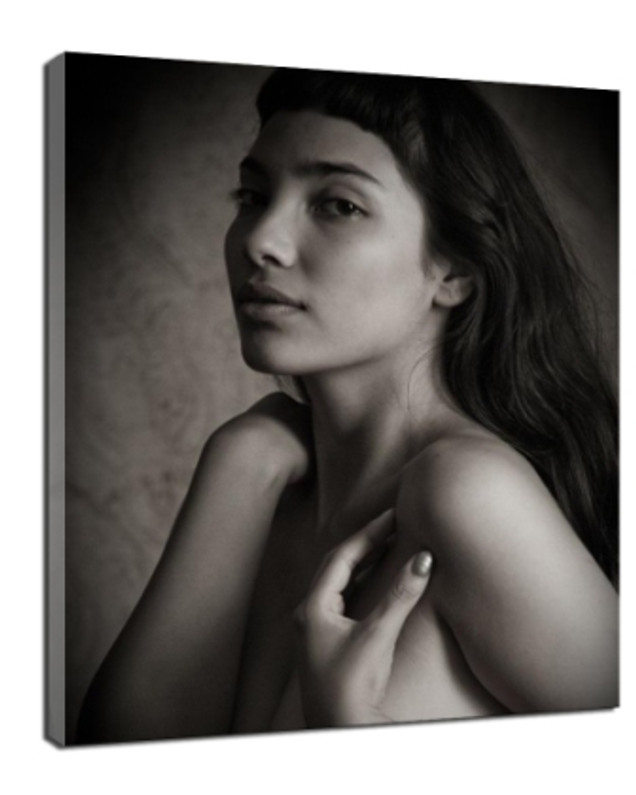Create beautiful indoor portraits without a flash
Mastering the flash means mastering the light in any situation. Sometimes, however, the beautiful light is just there to be found and used. Natural light and ambient light can be your best friends if you are willing to spend a little time with your model and have some flexibility.
For me, using flash is the most effective way to capture high-quality portraits. There is no better way to do this than to have complete control over your light, save time, and get predictable results. Of course, you must know how to use the flash. But this ability only needs to be learned and practiced. Mastering the flash means mastering the light in any situation. Sometimes, however, the beautiful light is just there to be found and used. Natural light and ambient light can be your best friends if you are willing to spend a little time with your model and have some flexibility.
A continuous light source, as opposed to the flash, allows you to see its effects on the model and the environment in real time and adjust accordingly. It's a great way to learn about lighting, and these lessons can no doubt be applied to flash photography. As I like to say, "Light is light." Whether it's a continuous light source or a flash, the principles and principles of lighting for the model and the environment are the same. The difference is that the flash emits more light and is so short that the photographer can't see the effect in real time. Using a continuous light source, you can move the light source and the model as you wish to see the final result in real time. Just take a few more shots to confirm the exposure.
Create beautiful indoor portraits without a flash
Windows are probably the most beautiful light source you can find. It's like a giant soft light box, and you can use different curtains for a variety of effects. Simply put the model near the window and let the light create a dramatic effect. I like to have the model pose in a way that creates shadows on one side, which is the classic way of lighting people.
Indoor lighting
Using indoor light bulbs can also create great results. I like to take off the lamp cover and use only the bulb. To begin with, only place the main light halfway in front of the model, a little above the top of the head. This creates a classic lighting effect. The second light can be placed far behind the model as a backlight.
Camera Settings
Usually my advice for indoor shots is "high iso and wide aperture". Start your camera with the ISO at the highest acceptable noise level, use the maximum aperture of the lens, and get the fastest shutter speed. Of course, these Settings are related to each other, and all play a role in exposure. So you need to adjust them and make compromises based on your shooting environment and what you want to achieve.
Fortunately, most modern DSLRS offer good high sense performance, so most indoor light sources and low light levels are not a problem. But even if your camera produces a lot of noise at high sensitivity, this is not a serious problem. You can either preserve the noise or reduce it later with noise reduction techniques. Many photographers actually add artificial noise to their images to simulate the effect of film. Simple tip: Don't worry about noise unless it interferes with your creative intent.

Another factor in creating a beautiful portrait in low light is a large aperture lens. Large aperture means maximum aperture at least f/2.8. The larger the aperture, the more light will flow through the lens. This gives you more options on the ISO and also increases shutter speed. A large aperture lens can also create a shallow depth-of-field effect, which is useful in portrait photography.
Shutter speed is an important consideration, not only because it affects the amount of exposure, but also because slow shutters can create a potential blur. But you may find that occasionally blurry photos are more artistic, and portraits don't have to be as sharp as a needle.
Shutter speed: 1/100s or higher
Using aperture priority mode, the camera automatically determines the shutter speed. You should pay attention to the shutter speed and make sure it is not too slow to blur. Again, this is just the beginning. My "Iron hand" can be held for 1/15s. To get good results, you may want to use M mode to control all options. I recommend this if the lighting conditions are stable.
Also, you may shoot in RAW format, which allows you to do a lot of post-production adjustments, including white balance, exposure, and contrast. Although white balance does not work in RAW, you can set it to see the final effect. In addition, selecting white balance tells the software what color temperature you are setting.
Creative post-processing aside, here are a few caveats:
White balance: Not all light sources have the same color temperature. No matter what they look like to the naked eye, different light sources cast different colors of light. So, if you use a bright tungsten lamp as the main light for your portrait and a window light source as the background light, you will encounter unexpected color temperature mixing. Fortunately, you can correct for this bias in post-processing. But if the mix is nothing to worry about, leave it alone. The colors may be acceptable. If this is not acceptable, you can turn them into artistic colors or black and white photos. So don't worry about that.
Noise: Most of the time, I personally like to have some noise in my photos. But if you're using too high an ISO, you need to do noise reduction. We have a lot of good camera built-in software, third-party software, or plug-ins to handle it. For example, I use Light room’s noise reduction tool or Photoshop's Noise Ninja plugin.
Natural light and ambient light indoor photography is a great way to learn about portrait photography. The experience gained in this way can also be useful when taking portraits using flash bulbs or in the studio. Unlike outdoor photography, indoor photography without flash causes some low light problems. Take advantage of the tips above and you'll be able to handle them and take good pictures.
Recent Posts
-
Transform Your Space with Stunning Custom Canvas Prints in Australia
When it comes to adding a personal touch to your home or office, nothing beats the elegance and char …10th Mar 2025 -
Who Makes Canvas Prints? Discover the Experts Behind Your Custom Art
When it comes to turning your cherished photos into stunning wall art, canvas prints are a …10th Mar 2025 -
How to Transfer Photo on Canvas: A Step-by-Step Guide to Creating Personalized Art
Creating personalized art has never been easier, and one of the most popular ways to do this is by t …10th Mar 2025
